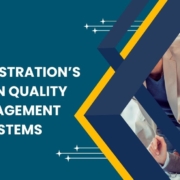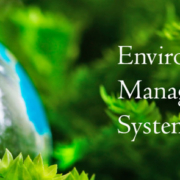ISO Registration’s Role in Quality Management Systems
In today’s competitive global market, quality is more than just a feature; it’s a promise to customers, a requirement for business sustainability, and a benchmark for continuous improvement. Companies across all sectors strive to meet consistent quality standards, and one of the most effective ways to achieve this is through ISO registration.
The International Organization for Standardization (ISO) has developed a series of globally recognized standards that help organizations build robust Quality Management Systems (QMS). ISO registration not only validates a company’s commitment to quality but also acts as a roadmap for internal improvements and external credibility.
This article explains the role of ISO registration in quality management, how it works, and why it is essential for businesses aiming to build trust and long-term success.
What Is ISO Registration?
ISO registration (often called ISO certification) is the process through which a third-party body confirms that an organization complies with a particular ISO standard, such as ISO 9001, the most widely used quality management standard.
The process involves:
- Implementing the relevant ISO standard internally
- Conducting internal audits and reviews
- Engaging a certification body for an external audit
- Receiving ISO certification after a successful evaluation
ISO registration demonstrates that the organization has implemented structured systems, policies, and procedures to consistently meet customer and regulatory requirements.
What Is a Quality Management System (QMS)?
A Quality Management System is a formalized framework that documents processes, procedures, and responsibilities to achieve quality objectives. A good QMS helps organizations:
- Ensure consistent product or service quality
- Increase operational efficiency
- Comply with regulations and standards
- Enhance customer satisfaction
- Foster continuous improvement
ISO 9001:2015 is the most commonly used standard for QMS and forms the basis for ISO registration in quality management.
The Role of ISO Registration in Quality Management Systems
1. Standardizing Processes
ISO registration enforces a process-driven approach. This means that organizations must define and document every key process related to product development, delivery, customer service, and quality assurance.
This level of standardization ensures:
- Predictability in outcomes
- Reduced process variation
- Clear accountability at every stage
- Uniform training and onboarding for staff
By following clearly defined workflows, companies reduce errors and increase efficiency, which directly supports quality objectives.
2. Focus on Customer Satisfaction
One of the core principles of ISO 9001 is a focus on customer satisfaction. ISO-compliant Quality Management Systems require regular measurement of customer feedback, complaint handling, and satisfaction tracking.
This results in:
- Better understanding of customer needs
- Timely response to issues
- Long-term customer loyalty
- Improved brand reputation
Organizations that align with ISO standards consistently deliver value to customers, which is the ultimate goal of any QMS.
3. Risk Management and Preventive Action
Quality issues don’t just affect customer experience—they can be costly and damaging to a business’s reputation. ISO registration requires companies to adopt a risk-based thinking approach. This means:
- Identifying potential problems before they occur
- Taking preventive actions instead of corrective ones
- Minimizing operational disruptions
Risk identification and mitigation become a continuous process, making the business more resilient and adaptable.
4. Improved Documentation and Traceability
An ISO-compliant QMS emphasizes proper documentation and record-keeping. Every step in the process must be recorded, reviewed, and accessible when needed. This leads to:
- Better traceability of errors
- Simplified audits and inspections
- Legal and regulatory compliance
- Knowledge preservation across teams
Clear documentation also helps in onboarding new employees and retaining organizational knowledge over time.
5. Employee Engagement and Responsibility
ISO registration brings a sense of ownership and responsibility among employees. Everyone in the organization becomes aware of their roles in maintaining quality. Training becomes systematic, and performance is continuously monitored.
Benefits include:
- Increased employee morale
- Reduced turnover
- Better communication across departments
- A culture of continuous improvement
When people understand their contribution to quality goals, they’re more likely to take pride in their work.
6. Global Market Recognition
Being ISO certified is a mark of credibility. It tells clients, vendors, and regulators that the organization adheres to international standards. This is especially important for:
- Expanding into new markets
- Participating in government or enterprise-level tenders
- Attracting global partners and investors
In many industries, ISO registration is not optional—it’s a prerequisite for doing business at a larger scale.
7. Support for Continuous Improvement
A major principle behind ISO standards is continual improvement. Organizations must regularly review their QMS performance, set improvement goals, and implement action plans. This creates a dynamic system that evolves over time instead of becoming stagnant.
The Plan-Do-Check-Act (PDCA) cycle, built into ISO standards, ensures a structured approach to problem-solving and optimization.
ISO Registration in SMEs and Startups
ISO certification is not just for large corporations. Small and medium-sized enterprises (SMEs) and startups can benefit greatly, as it:
- Improves operational discipline
- Builds early credibility
- Opens doors to larger contracts
- Reduces waste and inefficiencies
Many governments and financial institutions also offer incentives or support for ISO certification to encourage quality and standardization in small businesses.
Also Read: 10 Reasons Why You Need ISO 9001 Certification
Conclusion
ISO registration plays a vital role in shaping a strong Quality Management System. It goes beyond compliance—helping organizations improve performance, reduce risk, boost customer satisfaction, and stay competitive. In a world where quality equals trust, ISO certification is more than a document—it’s a strategic tool that supports long-term growth and excellence.
Whether you run a manufacturing plant, a service-based company, or a startup, investing in ISO registration is a step toward building a culture of quality, accountability, and success.



